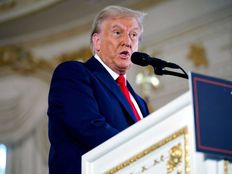
As we look ahead to 2025 and the potential impact of Donald Trump’s presidency on municipal bondholders, several key factors will shape the bond market.
Trump’s policies—ranging from tax reform to fiscal strategies—could affect how state and local governments issue debt, how investors respond to municipal debt, and how broader economic conditions influence the market. Trump’s track record and stated intentions from his last presidency can be an indicator of how his administration may affect the municipal debt markets.
In this article, we will take a closer look at four areas that are likely to be impacted by the administration change: potential tax reforms, investments in American infrastructure, management of interest rates, and broader economic growth in the United States.
Tax Reform and Its Implications for Municipal Bonds
One of the most significant impacts of Trump’s policies during his previous tenure was the Tax Cuts and Jobs Act of 2017 (TCJA), which restructured the tax code and had direct consequences for municipal bond investors. With Trump’s return to office in 2025, there is a possibility the TCJA could be further revised or similar tax reforms could be proposed.
- Corporate tax rate adjustments: Under the 2017 tax overhaul, corporate tax rates were cut from 35% to 21%. If this rate were to be adjusted again, it could influence demand for municipal bonds. Corporations traditionally used municipal bonds to shelter income from taxes, so any adjustments to corporate tax rates could impact how much demand corporations have for tax-exempt bonds.
- SALT deduction cap: The cap on the state and local tax (SALT) deduction, which was set at $10,000 under the TCJA, might remain or be adjusted. A future move to raise or remove this cap could increase the demand for municipal bonds, particularly in high-tax states such as California, New York, and New Jersey, as investors look to offset high local taxes with the tax-free income that municipal bonds offer. For example, a resident of California, who faces high state taxes, may have previously been able to deduct all those taxes from their federal returns before the SALT cap was introduced. If Trump were to lift this cap, investors in such states could have an incentive to increase their holdings in municipal bonds to shield more of their income from federal taxation.
Infrastructure Plans and Municipal Bond Issuance
One of Trump’s signature issues during his previous presidency was infrastructure development, though large-scale infrastructure legislation was never fully realized. However, in his second term, Trump is likely to revive his infrastructure push, especially as he has promised significant investment in upgrading America’s infrastructure in previous speeches.
- Increased municipal bond issuance: If Trump prioritizes infrastructure spending in 2025, it could lead to a significant increase in the issuance of municipal bonds by states and local governments. Projects ranging from road repairs to urban redevelopment would require funding, which is often raised through the sale of municipal bonds.
- Public-private partnerships (P3s): Trump has advocated for public-private partnerships as a way to finance infrastructure. While these projects might reduce direct reliance on traditional municipal bonds, they could still involve some bond issuance, especially if public entities seek to finance their portion of the projects via bonds.
Interest Rates and Inflation
Another key consideration for municipal bondholders in 2025 will be the broader economic environment under Trump’s presidency. During his first term, the Federal Reserve gradually increased interest rates, which had an inverse effect on bond prices (as rates rise, bond prices typically fall). However, the COVID-19 pandemic prompted the Fed to lower rates drastically in 2020 to stimulate the economy.
- Federal Reserve policy: The Federal Reserve’s stance on interest rates will continue to influence the municipal bond market. If inflationary pressures persist into 2025, and the Fed raises interest rates to combat inflation, bond prices could decrease, especially for longer-duration municipal bonds. However, as inflation cools, the demand for tax-exempt bonds could increase again as lower interest rates make municipal bonds more attractive relative to other fixed-income investments. For example, a 10-year municipal bond with a 2% coupon rate may become less attractive compared to newly issued bonds with higher yields. Investors holding older bonds may face capital losses if they decide to sell them before maturity.
Economic Growth and State Budgets
Trump’s economic policies, including deregulation, tax cuts, and trade policies, could influence state and local budgets in 2025. If the economy performs well under his leadership, state and local governments may experience an influx of tax revenue, which could improve their credit ratings and reduce the risk of defaults on municipal bonds. However, if the economy falters due to trade tensions, inflation, or other factors, states may struggle to meet their debt obligations. This is also true for states that rely heavily on federal spending such as Medicaid or infrastructure funding; if economic growth slows, municipalities may face tighter budgets or the potential for increased credit risk.
For example, in 2025, given President-elect Trump’s stance on drilling and deregulation of domestic oil supply, a state like Texas, which benefits from strong oil revenues, could see an overall growth in its revenues, leading to an improvement in its bond ratings. Conversely, states with large social safety nets, like California, could face budget deficits if federal support is reduced under a Trump administration, potentially harming the bond market.
The Bottom Line
For municipal bondholders in 2025, the potential impacts of a second Trump presidency could be significant. The continuation of tax reform, infrastructure investments, deregulation, and economic policies would all play a key role in shaping the bond market.
- Adjustments to corporate tax rates and the SALT deduction could influence demand for municipal bonds, especially in high-tax states.
- Increased bond issuance for infrastructure projects could present opportunities for investors.
- Deregulation and reduced federal oversight might have mixed effects on municipal bond credit ratings.
- Interest rates, inflation, and state revenues will continue to be crucial factors in the performance of municipal bonds.
Bondholders will need to stay informed about changes in tax policies, federal economic strategies, and interest rate movements to adapt to the evolving municipal bond landscape under Trump’s presidency. The key to success will be understanding the interplay between federal actions and local government finances, as well as keeping a close eye on credit quality and broader economic trends.
Disclaimer: The opinions and statements expressed in this article are for informational purposes only and are not intended to provide investment advice or guidance in any way and do not represent a solicitation to buy, sell or hold any of the securities mentioned. Opinions and statements expressed reflect only the view or judgment of the author(s) at the time of publication and are subject to change without notice. Information has been derived from sources deemed to be reliable, the reliability of which is not guaranteed. Readers are encouraged to obtain official statements and other disclosure documents on their own and/or to consult with their own investment professionals and advisors prior to making any investment decisions.






